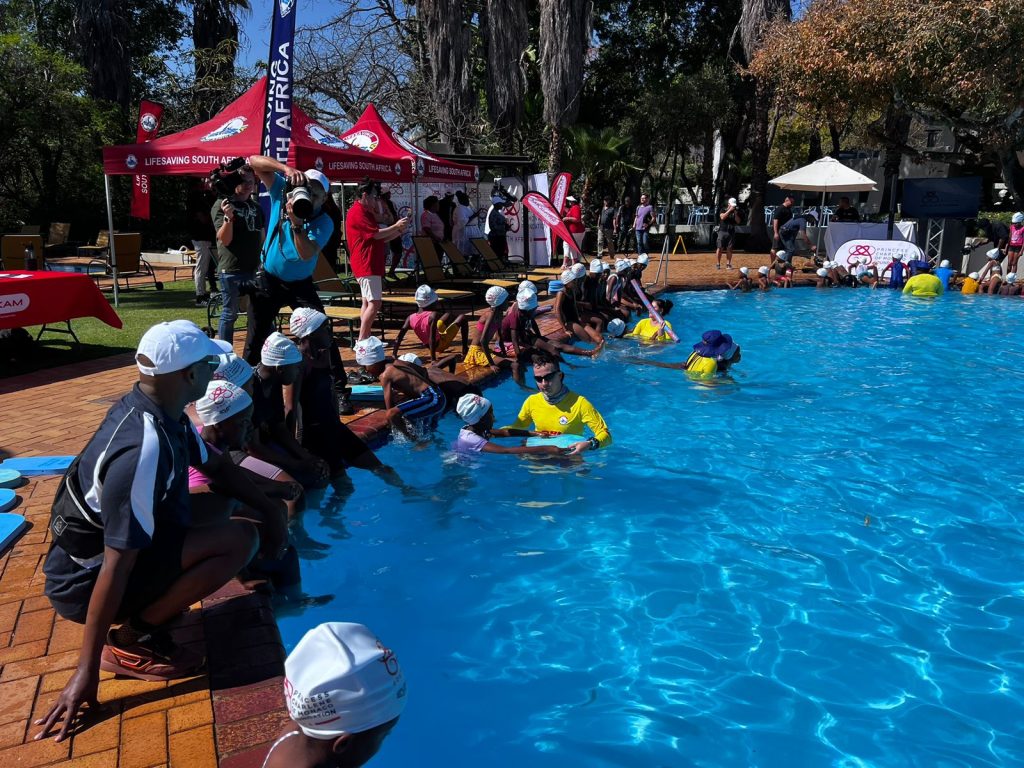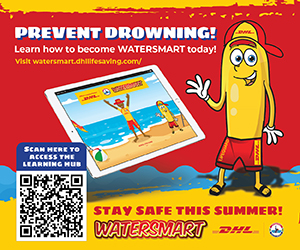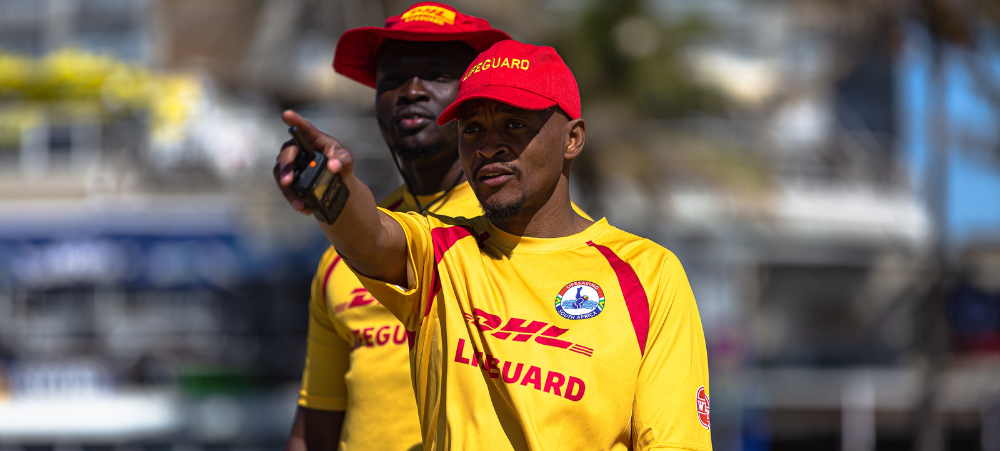Sunshine, watermelon and flip flops… summer holidays are around the corner! If you’re a parent you’re probably planning activities to keep your little ones occupied, or maybe pulling together your holiday travel plans. Whilst you are ticking off your packing list and racing to get your shopping done, be sure to take a moment and consider how you will keep your children safe around water this summer holiday.
Drowning happens quickly and silently and can devastate a family in a matter of minutes. More than 700 children under the age of 15 years old die from drowning every year in South Africa, but even non-fatal incidents in which a child is rescued can leave a family dealing with long term social and health consequences. Recent evidence from Australia suggests that an infant’s risk of drowning triples as they reach one year of age. In South Africa, we know that children under 5 years old have the highest drowning rates compared to other age groups, but rates remain high in older children as well. Young children tend to drown in water in and around the home, while older children drown in larger, open bodies of water. Whilst these numbers are sobering, it is important to remember that most drowning incidents are preventable.
Here are some tips for keeping your children safe around water this summer.
1- Layers of barriers
Many drowning incidents in very young children are unwitnessed, meaning that no-one is around at the time that the child enters the water. Young children often fall into water unintentionally while playing nearby or fetching toys that they may have been playing with earlier. One of the most effective ways to prevent drowning in young children is to ensure that there are barriers preventing them gaining access to water around the home. This means ensuring that pools are fenced off or have a safety cover that meets local safety standards, even better if you have both. Having a cover or fence alone is not enough – it must be used correctly! This means replacing the cover completely when a pool is not in use or ensuring that a gate is closed and not easily opened by children. It’s important to remember that hot tubs, paddling pools, blow-up pools, and portable above ground pools all present a drowning risk and should be protected appropriately or emptied when not in use. Pools aren’t the only area of risk around your home either – small ponds, reservoirs or storage tanks should also be protected by a barrier preventing access.
2 – Designated supervision
So many drowning stories start with “I thought he/she was watching”. Counter intuitively, drowning incidents can happen easily in a crowd because they are silent and not signaled by splashing as many people think. Consider the large family braai where everyone is chatting around the pool and kids are splashing and laughing. Everyone is there but no-one is watching. Designating an adult to supervise children enjoying any water is essential. A supervisor should be an adult, not an older sibling, who is sober, not distracted by their phone or a book and within arm’s reach should something go wrong. As a parent it’s so easy to fall into the trap of thinking that nothing bad ever happens, so I’ll just step away to take that phone call or take the pot of the stove. Supervision is about someone being able to respond appropriately in the tiny percentage of times that things go wrong, not the majority of times where it’s just another day of summer fun. Forget about the “dad bod” or “mummy tummy” – get your cozi on and enjoy the water with your kids.
3- Learn CPR and know your emergency number
Knowing what to do in an emergency can make the difference between a tragedy and a close call. CPR is simple to learn and, if performed early, can save a life and reduce the chances of long-term neurological damage in a drowning incident. Calling 112 from any cell phone in South Africa will reach a call centre who will route you to the closest emergency service.
4 – Swim between the flags
When heading to the beach, make sure to swim only where and when lifeguards are on duty. Lifeguards do not replace adult supervision of children, but swimming between the red and yellow beach flags ensures that you are in the safest location on any given beach.
5- Be mindful of unfamiliar homes and holiday locations
Even the most diligent, water smart parents can get caught out while travelling. It’s important to consider water safety when visiting family who might have older children or no children, or while staying in hotels and guesthouses that are unfamiliar and exciting to explore. When you’ve arrived at your holiday location, take a slow walk around the property, and consider it from the perspective of your children – where is the water? Where are the access points? How can you prevent access? If you’re visiting an unfamiliar beach, dam or river, speak to locals or lifeguards to find out where the safe swimming spots are.
6- Watch out for lilos and pool floats
That flamingo pool float is super fun but be very cautious using it on any large open bodies of water or rivers. Floaties get caught by the wind and currents very easily and can quickly take a child (or adult!) out of their depth.
7- Teach your children survival swimming skills
Summer holiday preparation happens year-round and enrolling your children in a survival swimming or learn-to-swim programme can help them learn the essential skills of safe entry and exit and what to do when they fall in. Speak to them about water safety from a young age to ensure that safety becomes engrained in their behaviour.

8 -Teach your children to become Watersmart
Lifesaving SA has launched a free online e-learning WaterSmart hub, making water safety content accessible to all South Africans.
The hub includes animated videos and interactive quizzes and spot the risks, making it fun and easy for children to learn about water safety and prevent drowning. The content draws upon LSA’s Watersmart pogramme, an educational programme written for the Department of Education Life Skills Orientation curriculum for grades 4-6, and includes the character of “Resci,” who guides learners through the content. Teachers and parents are guided with learning plans, downloadable resources such as workbooks, readers, and posters to assist with delivering the programme and after each module is completed the learner is presented with a certificate.

Become Watersmart today. To access the hub, visit https://watersmart.dhllifesaving.com/library/home or click on the QR code to start learning.

For more information about Lifesaving South Africa visit www.lifesaving.co.za and follow us on social media
X – @LifesavingSA
Facebook – Lifesaving South Africa
Instagram – lifesavingsouthafrica
- Preventing the unthinkable - December 19, 2023
- Lifesaving SA and DHL launch an online water safety learning platform - December 5, 2023





